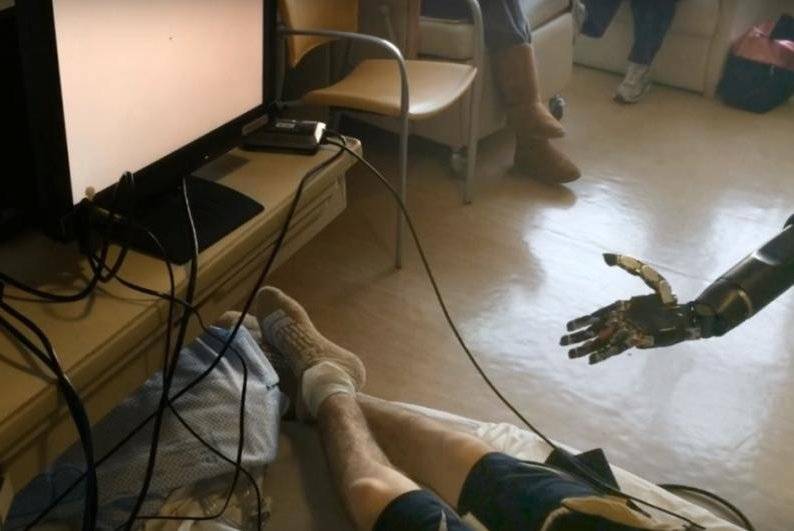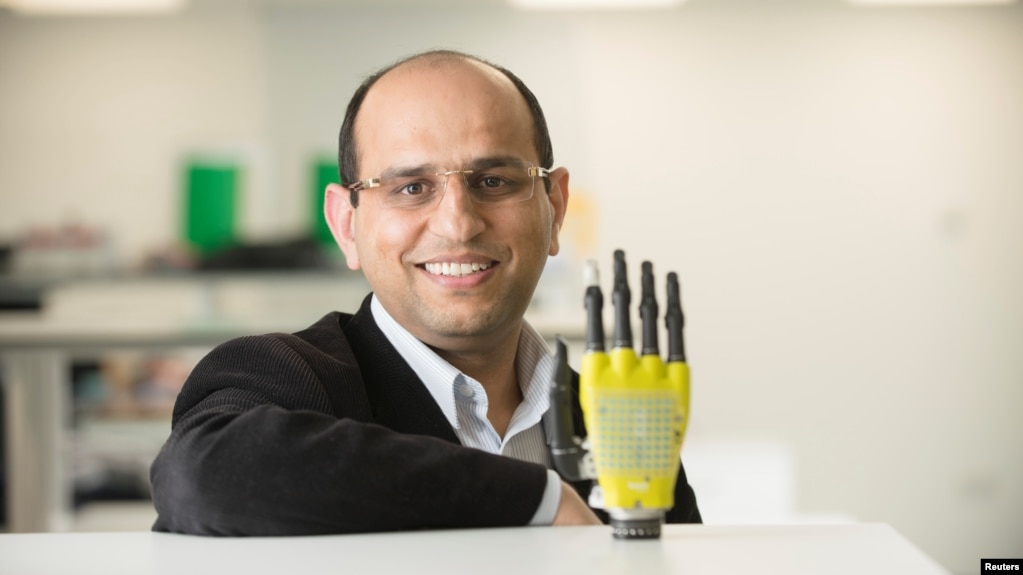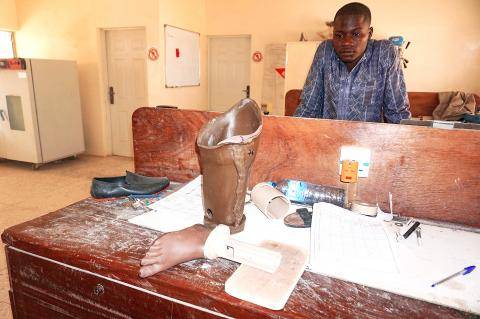While
prosthetics are usually fully powered using batteries, a new prototype
from University of Glasgow researchers opens up the possibility for
so-called "solar-powered skin," which would include better sense
capabilities than current technology. "If an entity is going out in a
sunny day, then they won't need any battery" to activate their senses,
said Ravinder Dahiya, a research fellow at the university and a leader
of the study. "They can feel, without worrying about battery." The
technology involves installing a thin layer of pure carbon around a
prosthetic arm, hand or leg. This allows light to pass through it and be
easily used as solar energy, the researchers said in a research paper.
Ravinder Dahiya of the University of Glasgow’s School of Engineering
poses with the prosthetic hand developed by his team at Glasgow
University, Scotland
The
sun can provide up to 15 times more energy than is usually needed to
power a prosthetic limb, Dahiya said. This extra — and renewable —
energy can be used to power sensors that increase sense and feeling in a
limb, so much so that the prosthetic can feel pressure, temperature and
texture like natural skin, the paper said. "The skin is sensitive to
touch and pressure, so when you touch the skin there you will know what
point you are contacting and how much force you are applying," Dahiya
said, describing the prototype. The scientists are the first to develop
a model for solar-powered prosthetic skin, he told the Thomson Reuters
Foundation.
The
technology could also increase the functionality of robots, allowing
them to have a better understanding of what they touch and interact
with, according to Dahiya. If robots had limbs that are sensitive to
touch and pressure they would be less likely to make errors or injure
humans, he said. The researchers hope to further develop the prototype
in the next two years, Dahiya said. Eventually, he hopes to power the
limb's motors with the renewable energy as well - rather than just the
skin. "Because we are saving a lot of energy, our vision is that ... if
we store this energy in some way we will be able to also power the
motors with the energy," he said. "The prosthetic will be fully energy
autonomous."
Skin Powered by the Sun? Energy-Saving Prosthetic Limbs Get Better Feeling



